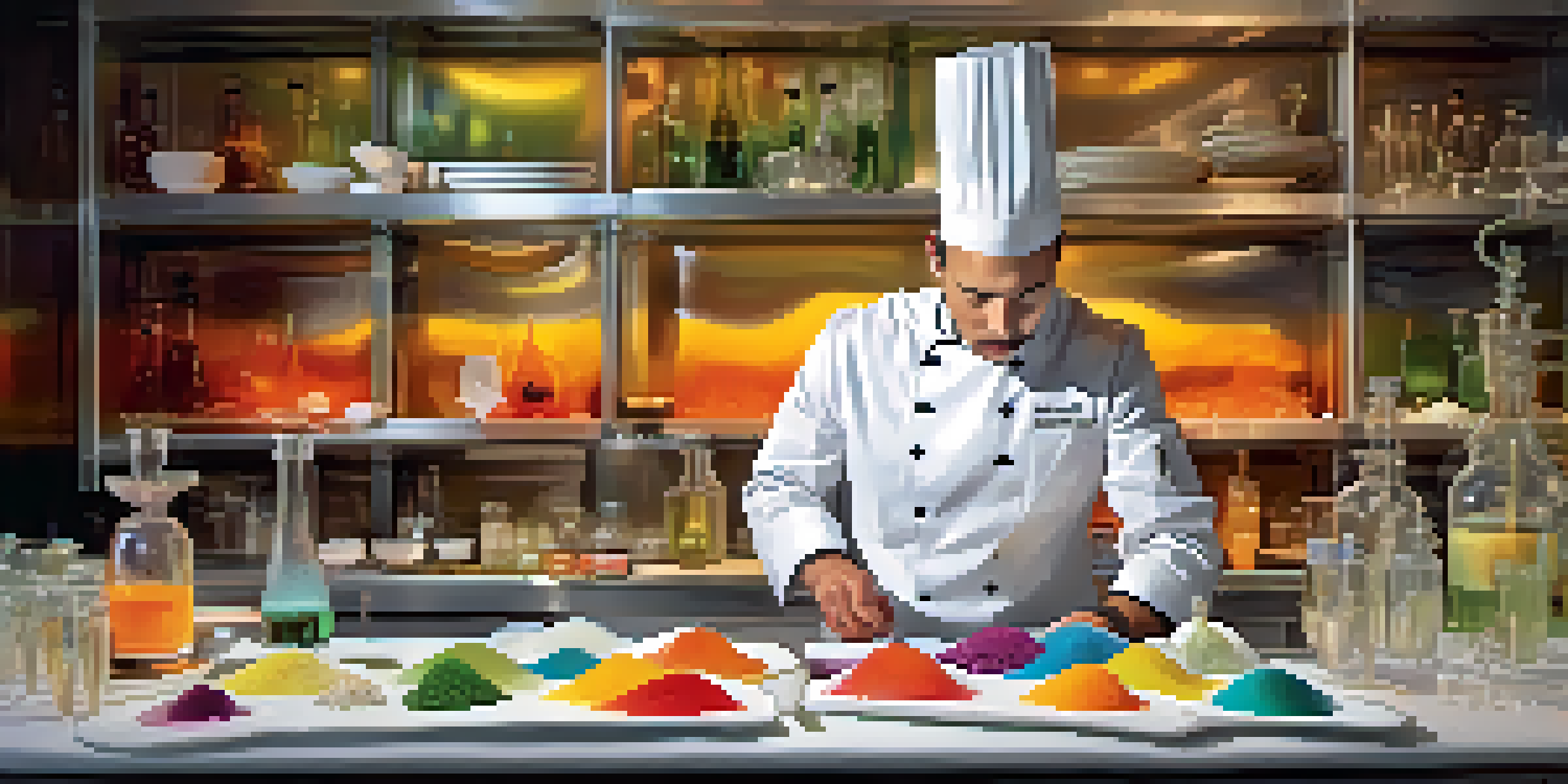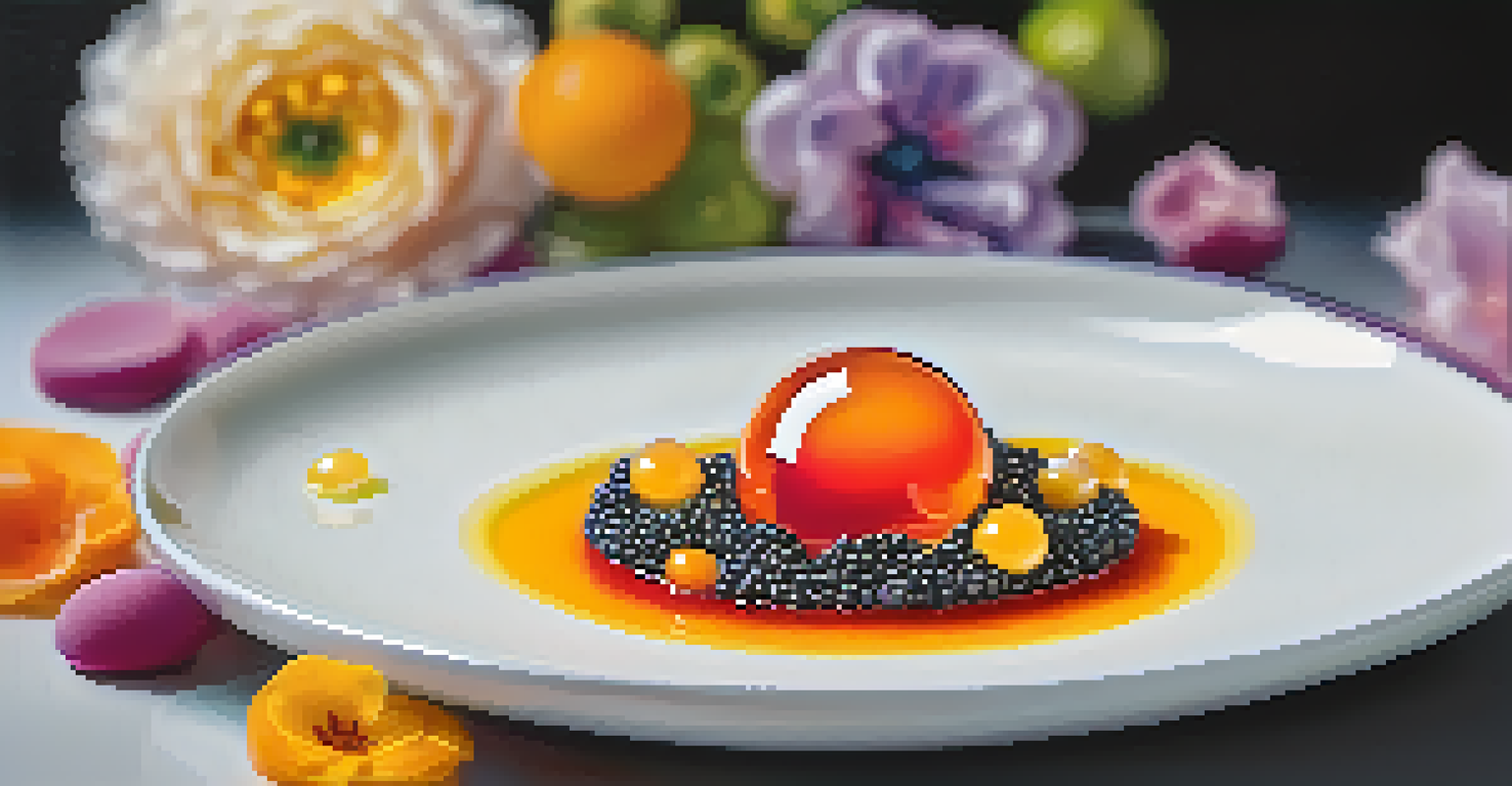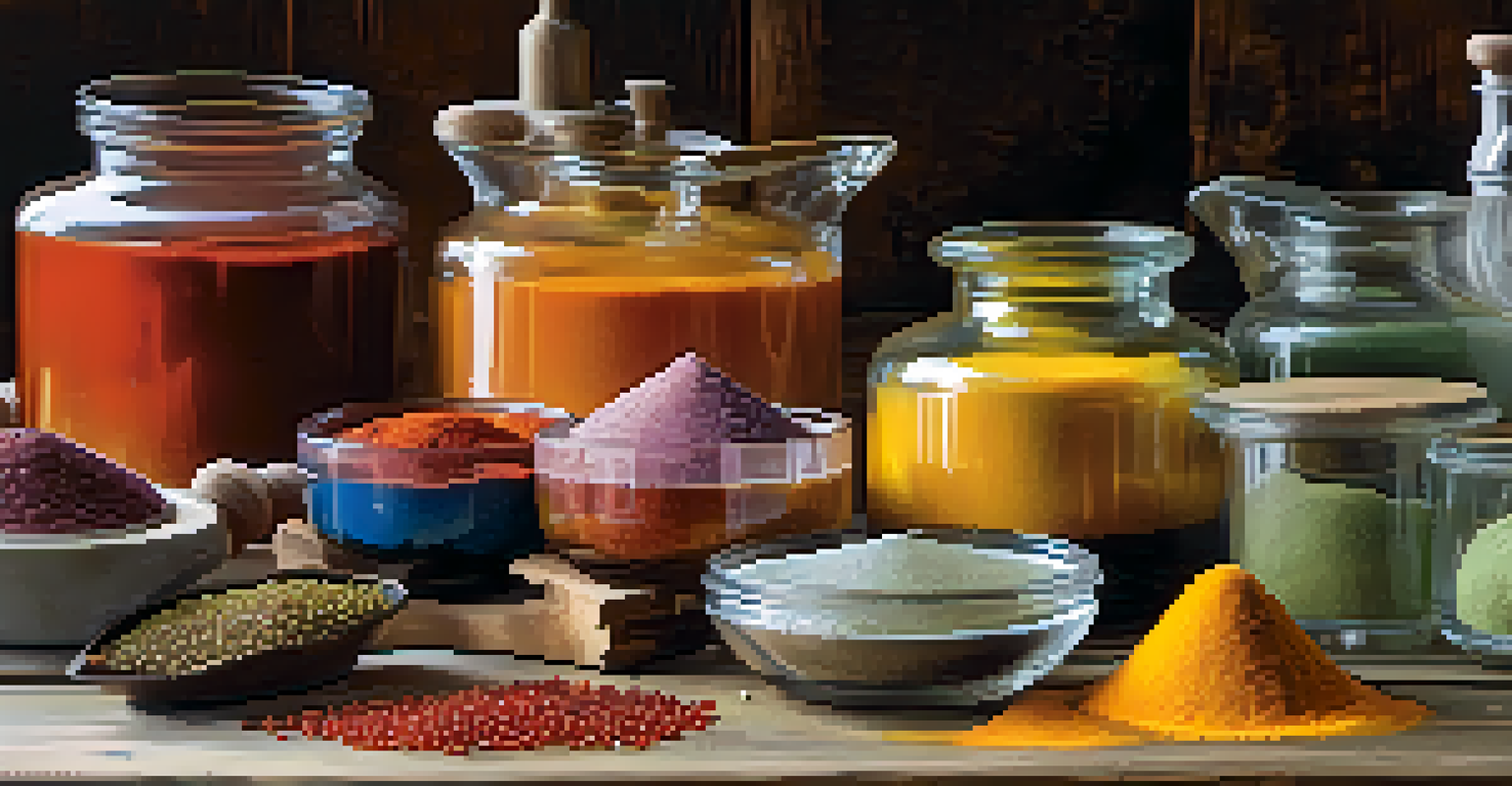Molecular Gastronomy: Science Meets Culinary Artistry

Understanding Molecular Gastronomy: The Basics
Molecular gastronomy is a fascinating culinary trend that combines food science with cooking techniques. It's not just about making food look pretty; it's about understanding the chemical reactions that occur during cooking. By applying scientific principles, chefs can manipulate textures, flavors, and even the temperatures of dishes.
Science and cooking are not separate but intertwined; they are two sides of the same coin.
Think of it as cooking with a lab coat on, where traditional recipes are transformed into innovative culinary experiences. This approach allows chefs to create dishes that surprise and delight the senses, often in unexpected ways. For instance, a simple fruit can be turned into a foam or a gel, offering a new mouthfeel and flavor burst.
In essence, molecular gastronomy takes the guesswork out of cooking. By understanding the 'why' behind cooking processes, chefs can replicate their successes and innovate further. This blend of creativity and science is what makes molecular gastronomy so compelling.
The History Behind Molecular Gastronomy
The roots of molecular gastronomy can be traced back to the late 20th century, when chefs began experimenting with scientific principles in their kitchens. Notable figures like Ferran Adrià and Heston Blumenthal brought this approach to the forefront, showcasing how science could elevate culinary artistry. Their groundbreaking work inspired a new generation of chefs to explore this uncharted territory.

Interestingly, the term 'molecular gastronomy' was coined by physicist Nicholas Kurti and chef Harold McGee in the 1980s. They aimed to analyze the physical and chemical processes involved in cooking, bridging the gap between science and culinary arts. This collaboration laid the groundwork for what would become a culinary revolution.
Molecular Gastronomy Blends Science
This culinary trend merges food science with cooking techniques to create innovative and surprising dishes.
Today, molecular gastronomy is celebrated worldwide, influencing not just fine dining but also home cooking. The movement has encouraged chefs to think outside the box and pushed the boundaries of what can be achieved in the kitchen.
Key Techniques in Molecular Gastronomy
At the heart of molecular gastronomy are several innovative techniques that chefs employ to create unique dining experiences. Techniques such as spherification, emulsification, and sous-vide are just a few examples. Spherification allows liquids to form spheres that burst in your mouth, transforming the way we experience flavors.
Molecular gastronomy is about making the invisible visible, highlighting the science behind what we eat.
Another technique, emulsification, combines ingredients that typically don't mix, like oil and water, creating rich, creamy textures. Sous-vide, on the other hand, involves cooking food slowly in a vacuum-sealed bag at precise temperatures, resulting in perfectly cooked dishes. These methods highlight how science can enhance traditional cooking.
Understanding these techniques not only adds excitement to the culinary process but also encourages chefs to be creative problem solvers. By mastering these skills, chefs can elevate their dishes and create unforgettable moments for their diners.
The Role of Ingredients in Molecular Gastronomy
Ingredients play a crucial role in molecular gastronomy, as they can behave differently under various conditions. For instance, the use of agar-agar, a gelatinous substance derived from seaweed, allows chefs to create jellies and gels with unique textures. Similarly, lecithin, often derived from soy, is used to create foams that enhance flavors while adding visual appeal.
Understanding the properties of ingredients is essential for successful molecular gastronomy. This knowledge enables chefs to experiment with flavor pairings and textures, leading to exciting new culinary inventions. For example, combining chocolate with lavender oil might seem unusual, but when done right, it creates a harmonious dish that surprises the palate.
Key Techniques Enhance Dining
Techniques like spherification and sous-vide allow chefs to manipulate textures and flavors, elevating the dining experience.
Moreover, the focus on high-quality, fresh ingredients is a cornerstone of molecular gastronomy. Chefs strive to source the best components, as the science behind cooking amplifies their inherent flavors and characteristics, resulting in a truly memorable dining experience.
Molecular Gastronomy in the Restaurant Scene
Many high-end restaurants have embraced molecular gastronomy, offering diners an experience that goes beyond traditional dining. Restaurants like elBulli and The Fat Duck have become famous for their innovative menus that challenge perceptions of food. Each dish is often a multi-sensory experience, combining taste, aroma, and visual artistry.
Diners at these restaurants are not just eating; they are embarking on a culinary journey. Courses might include deconstructed desserts, savory ice creams, or even edible cocktails that change flavor as you consume them. This interactive aspect keeps diners engaged and excited, making each meal an adventure.
The trend has also influenced casual dining, with many chefs incorporating molecular techniques into their menus. This democratization of molecular gastronomy allows more people to experience its wonders, expanding its reach beyond the elite culinary world.
The Science Behind Flavor: Why It Matters
Understanding the science behind flavor is essential in molecular gastronomy. Flavor is a complex interplay of taste, smell, and texture, all of which can be manipulated through scientific techniques. By grasping how these elements work together, chefs can create dishes that are not only delicious but also memorable.
For example, the Maillard reaction, a chemical reaction between amino acids and reducing sugars, is responsible for browning and developing flavors in cooked foods. By controlling heat and timing, chefs can enhance this process, resulting in richer flavors and appealing colors. This attention to detail reflects the artistry of molecular gastronomy.
Future of Culinary Innovation
As interest in molecular gastronomy grows, more accessible resources are emerging, expanding its reach to both chefs and home cooks.
Ultimately, the goal is to evoke emotions and create a connection between the diner and the dish. By understanding and manipulating flavors scientifically, chefs can craft experiences that linger in the memory long after the meal is over.
The Future of Molecular Gastronomy
As food science continues to evolve, the future of molecular gastronomy looks promising. Chefs are now exploring new ingredients and techniques that expand the possibilities of what can be achieved in the kitchen. This ongoing experimentation encourages innovation and creativity, pushing the boundaries of culinary arts.
Moreover, as more chefs and home cooks become interested in molecular techniques, we can expect to see a rise in accessible resources and tools. From kits that allow for spherification at home to online courses teaching sous-vide cooking, the democratization of molecular gastronomy is well underway.

Ultimately, the fusion of science and culinary artistry will continue to inspire chefs and food enthusiasts alike. The exciting journey of molecular gastronomy is just beginning, and its potential to transform our dining experiences is limitless.